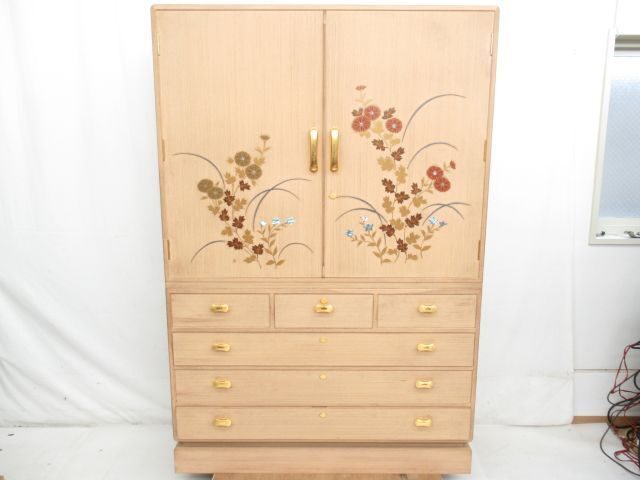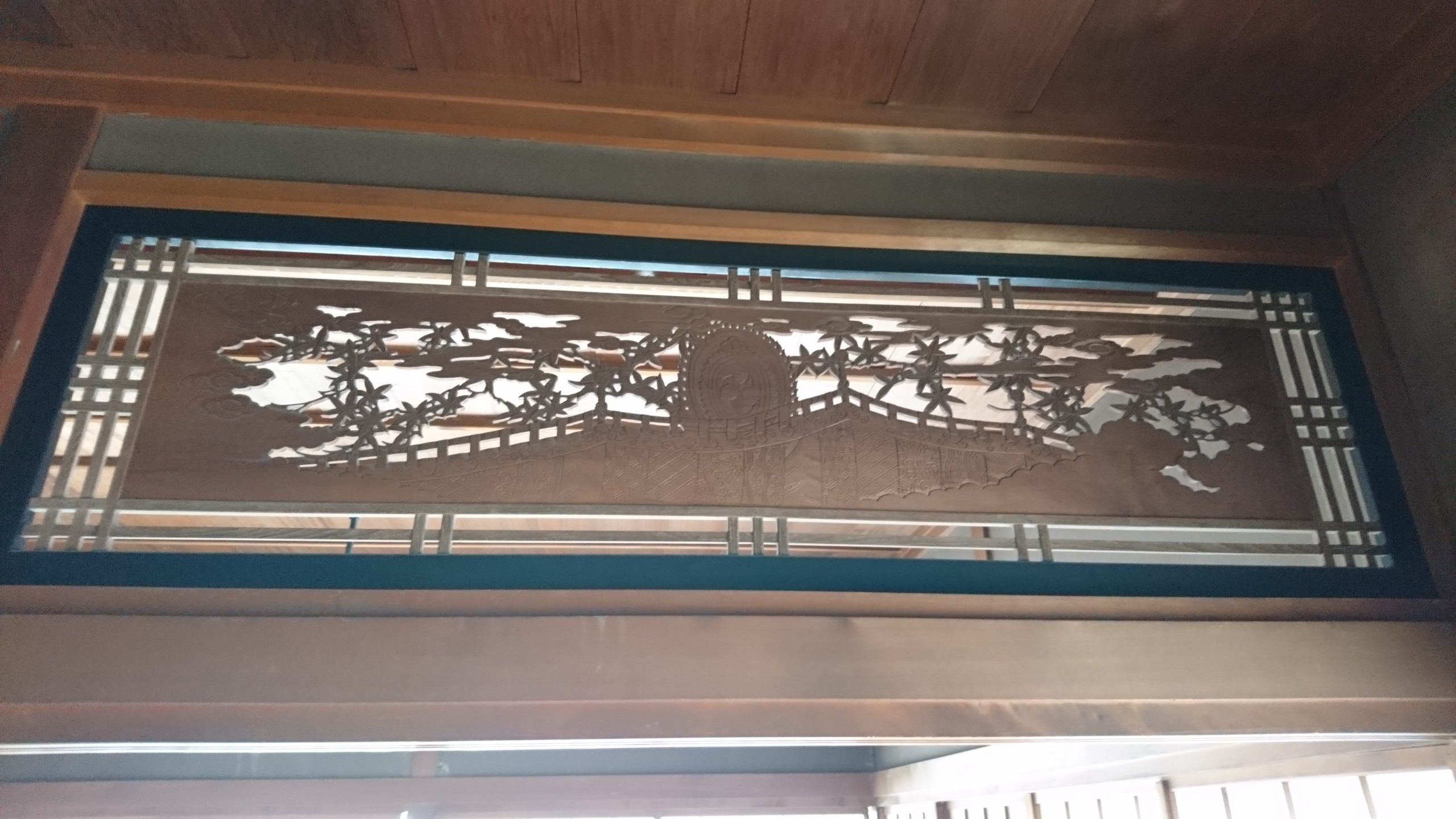1. What is Kishu Tansu?

It is a woodwork product made in Kishu, which is around Wakayama City, Wakayama Prefecture, and is called “Kishu Tansu” because the production technology was established in Kishu.
It is a storage furniture that has been highly evaluated as a high-class chest that has both decorativeness and durability.
Feature
It is assembled using paulownia, which is suitable as a material for storage furniture, using a delicate method that has been handed down from ancient times.
The paulownia chest is the representative of the so-called Japanese chest.
Paulownia is light and soft, and has a beautiful pale yellow color and heather, so it is suitable for storing clothes in the Japanese climate, and can be matched in both Japanese-style and Western-style rooms.
There are two types of paulownia chests, such as “Sampo paulownia” which uses paulownia on the front, top and both sides, and “Mae paulownia” which uses paulownia only on the front. is.
In addition, since the shrinkage rate is small, there is little deviation and it can be used habitually for a long period of time.
It has the property of absorbing moisture when it is humid and releasing it when it is dry, and because it has a small tradition of heat, it is a suitable material for storing clothing that is sensitive to changes in humidity and sound output.
Kishu Tansus are also characterized by being finished with abrasive powder.
The surface is beautifully and smoothly arranged using the grain of wood, and the drawers come out lightly.
Furthermore, when the drawer is returned, it boasts a high airtightness that allows the next drawer to slide out smoothly, protecting clothing from insects and moisture.
It is carefully made one by one by the high technique of craftsmen who have been rigorously studied for 3 years for flea sharpening and 10 years or more for canna sharpening.
2. Work process

① Image goods and wood removal
The cut timber is placed in a water tank to remove the lye, and then exposed to the sun for half a year to a year to dry. After drying, cut it to the required size.
② Re-distortion
The wood that has been distorted due to drying etc. is passed through a press machine and heat is applied to correct the distortion.
③ Hagi processing
Wood is carefully selected by looking at the color and the beauty of the grain.
While matching the grain of wood, join several boards together (join the sides of the boards) so that they become one board.
This is because it is thicker and stronger than a single board.
The width and combination of wood used will differ depending on where you use it, such as the surface of the door and the bottom plate of the drawer.
④ Making board
A member that has been cut according to the size and shape of the chest is cut with a plane.
Change the direction of shaving according to the front and back of the tree and the appearance of the grain.
⑤ Assembly
We will assemble the chest and drawers of the chest.
The joint is kumite-processed by combining wedge shapes.
Insert the wood into the groove that has been cut in advance.
At this time, tap the wood that is slightly larger than the size of the groove to be fitted to make it smaller (wood killing), and then fit it.
This is because when the inlaid wood later returns to its original size, it will not come out of the groove.
⑥ Made of wooden nails
Kishu chests do not use metal nails, but assemble materials with wooden nails (wooden nails).
In preparation for that, roast the wooden nails with Nuka. By doing this, excess water is removed and the oil contained in Nuka enters instead.
If you burn it, it will become colored, so fry it while observing it carefully.
⑦ Processing of drawers and trays
Wood nails are used to fasten the bottom and back plates of drawers and trays (drawers with shallow edges, mainly for storing clothes).
At this time, instead of inserting the wooden nails vertically into the material, drive them slightly diagonally.
If you put it straight vertically, it will be easier to pull it out after a while.
You need to get used to hitting it diagonally.
⑧ Finish
The surface of the chest is rubbed with a floating (a tool that exposes the roots of Uzukuri and Karukaya to water, then dries them and bundles them in a circle with a hemp string) to polish the grain. Kishu Tansus are characterized by a powdered abrasive finish.
Polish and dry using a mixture of polishing powder, water, and decoction of Yaksha Gobiko (deciduous small tree of the family Alnus firma and Betulaceae, which contains tannins) called Yamato liquid.
3. Traditional craftsman
Fukutaro Higashi

Born in a timber shop that has been around since 1884.
He wrote in his elementary school graduation album that he wanted to please his father as a child, so he said, “Become the best paulownia chest of drawers in the world.” I was learning.
One day in his third year of college, his friend, an Italian chef, asked me about the future and was shown a photo at that time.
It was a beautiful photo of Neuschwanstein Castle, taken by his friend’s father from a cliff.
At the moment when I felt the passion for taking the picture, I reminded myself that I should not end the technique and technique of Kishu Tansu that has been passed down from generation to generation, and Kyoto Traditional Crafts College (currently Kyoto). I enrolled in the Traditional Crafts College) and studied Sashimonoya Kibuki.
After his graduation, he eagerly aimed for a higher view, learned a special technique from his father’s colleagues, and learned the technique of lacquering by going to Kagawa prefecture.
Normally, lacquer is applied with a brush, but Mr. Higashi learned the technique of applying lacquer with his hands, and now he can apply lacquer more finely than with a brush.
4. Initiatives

“Like athletes, craftsmen have a limited age and physical strength to maximize their skills.”
Therefore, it is essential that the final finish is done by hand, but we are working on the digitization of traditional crafts in order to connect technologies and techniques to the next generation.
“Rough shaping is done by a machine that has programmed my technique, and finishing is done by myself.
This will not only leave the technology behind, but also reduce manufacturing costs and convey the appeal of paulownia to as many people as possible.
However, the programming is difficult. “
Mr. Higashi’s challenge has just begun.
It is not just Mr. Higashi’s desire to convey the charm of paulownia to people.
We must not forget the idea of connecting traditions.
First of all, in order to connect the techniques and techniques of Kishu Tansus that Mr. Higashi has inherited, we are working to nurture younger generations by accepting motivated young people and generously communicating the techniques.
Some have already left Mr. Higashi and became independent.
“Fostering a successor to be your rival is the fastest way to develop the industry,” said Mr. Higashi.
Kishu Tansus are not the only ones that pass on traditions to the next generation.
Mr. Higashi is taking on the challenge of going one step further.
He is no longer the same, he says, wanting to connect other technologies and techniques to the next.
What I am trying now is a submersible board, which is one of the gimmicks used in Kenken fishing in Wakayama.
It seems that there was a consultation as to whether it was possible to make this dive board.
“If you look at the real thing, you can make it in the same shape, and you can leave the shape with the introduced machine. But it is not enough to make it the same shape, you need to know the reason why it is this shape. I have to tell it, “he says, actually visiting the craftsmen and learning.
5.Impressions

Inheritance of tradition is indispensable not only for delicate art but also for modern society, and I think that not only inheritance but also its “Kokoro(心)” makes up for what we are living in the present.
I think that all the formations of a long history were indispensable for the progress of industry.
Traditional craftsmen create new traditions through technology that they cannot imagine.
I think technology will continue to advance.
I will study more so that I can convey the tradition.
Next time preview
Thank you for reading to the end!
I would also like to post some interesting things about Kansai.
Then, have a good trip from now on!
PS. We provide various information about Kansai in Japan, so please feel free to contact us if you would like to visit or experience it!



コメント